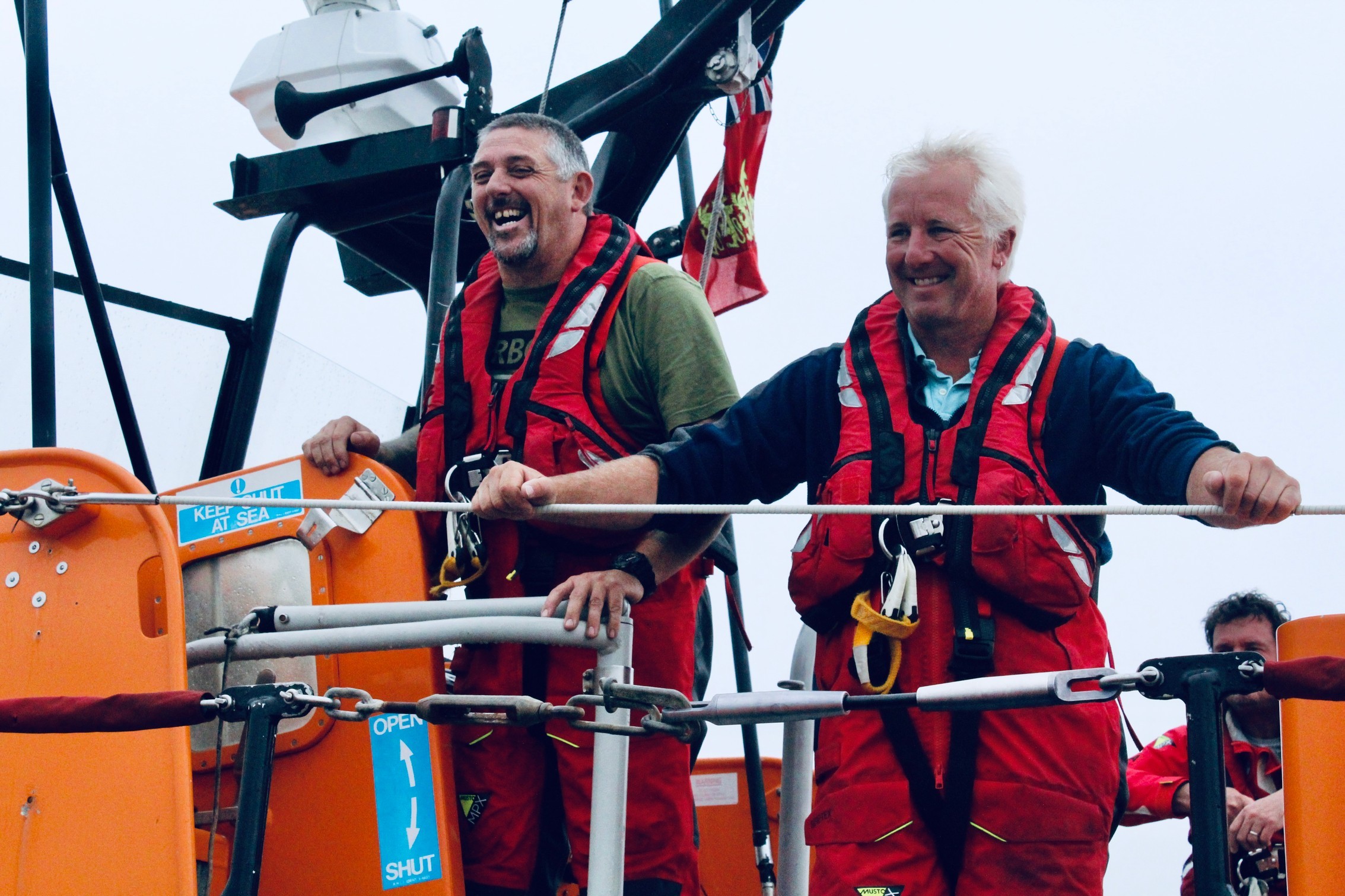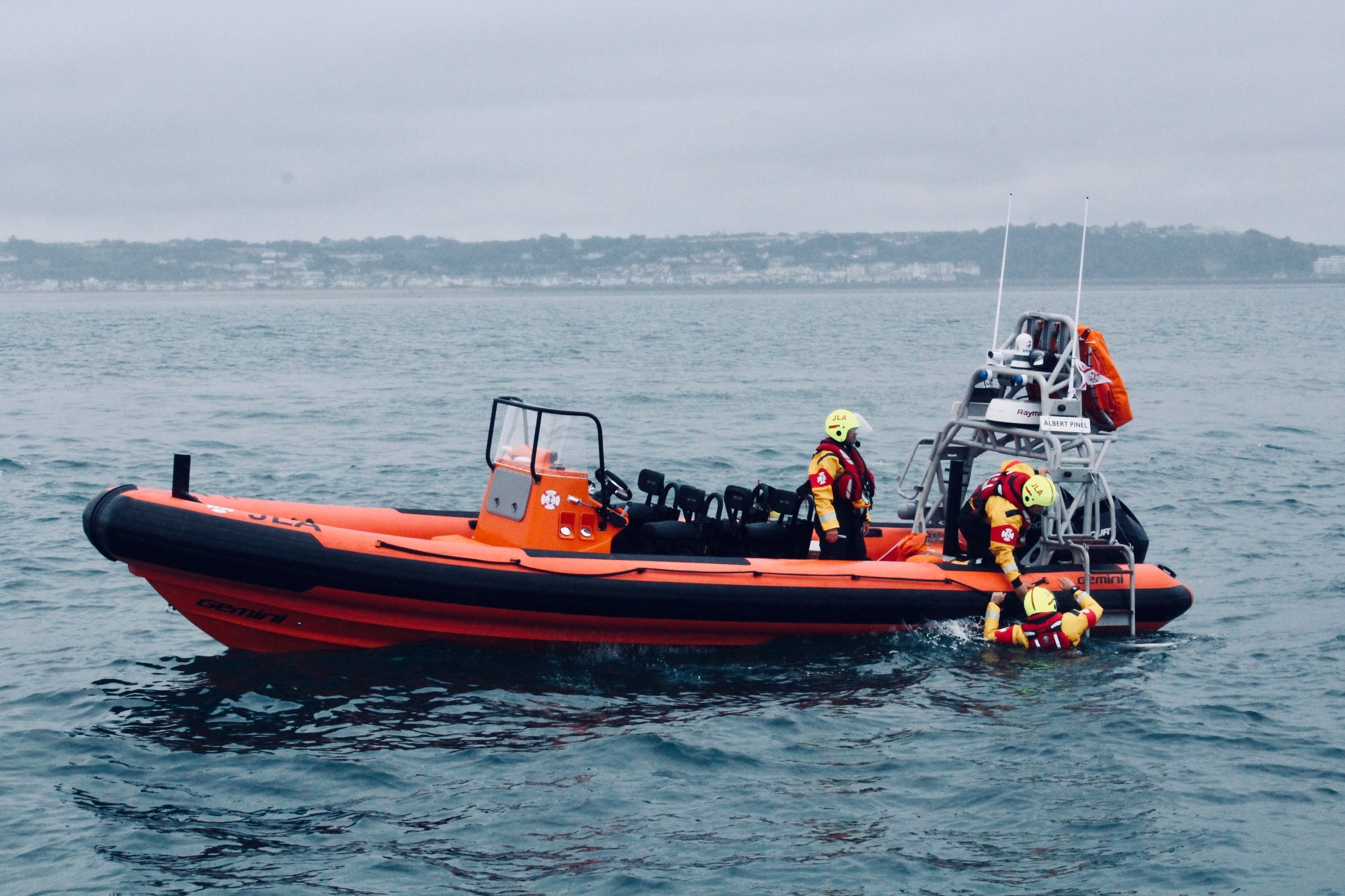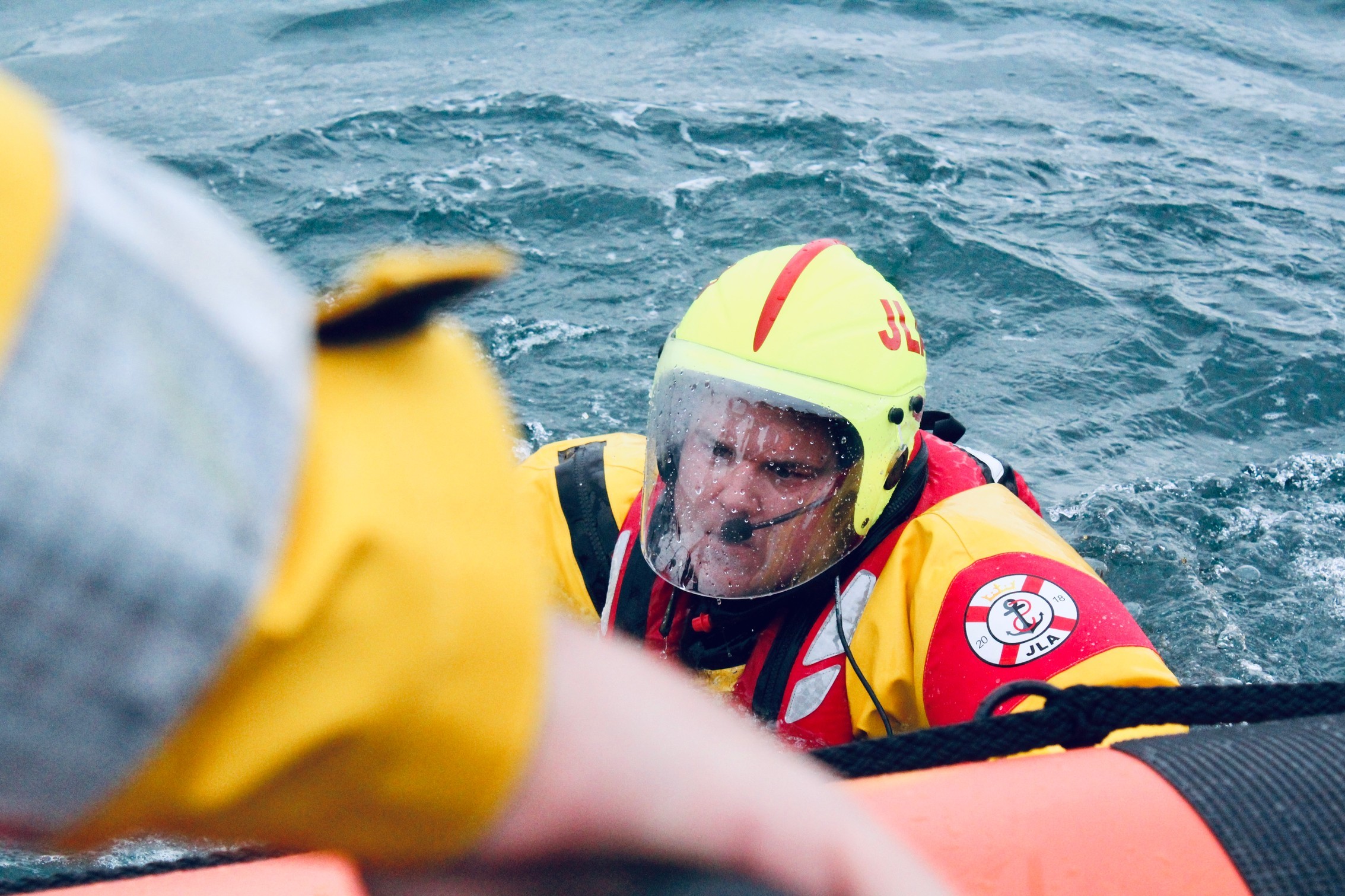Just three years ago, the Jersey Lifeboat Association was a fledgling organisation, formed when Mr Hibbs and many of his fellow crew members left the RNLI following a fiery and very public dispute.
The JLA’s new boat arrived in the Island earlier this month after donors raised the £250,000 needed to acquire the vessel – of the same type used by the special forces – from supplier Berthon RIB Solutions.
Speaking on a rainy Saturday morning, Mr Hibbs said he was proud of how the JLA had progressed since establishing itself as a charity.
‘What happened was well-publicised, but for us as a crew, the fact that we all stuck together just shows you what teamwork really is,’ he said.
‘We were up against it, there’s no doubt about it. It seemed like everywhere we turned there was some sort of obstacle – we had no help from anybody apart from the public and without that we wouldn’t be here.
‘To get to where we are today is an amazing feat which we are all really proud of and I think the RIB is proof of that.’

The dispute between the crew and RNLI officials came to a head in November 2017, when the organisation closed the St Helier station and took the all-weather George Sullivan lifeboat back to Poole. It re-opened the following year with a new crew.
An inquiry carried out by Guernsey’s harbourmaster found fault with both the RNLI and Mr Hibbs, the station’s coxwain.
It concluded that the RNLI had failed to properly manage the station for years and should never have investigated an informal complaint against Mr Hibbs which ultimately triggered the breakdown in the relationship.
Mr Hibbs, meanwhile, was described as a leader with too much power, which led to a ‘toxic culture’ in the station.
At the time, the JLA branded the report ‘misleading’.
A review was recently commissioned to see if a full inquiry into the crew’s 2017 fallout with the RNLI should take place.
Mr Hibbs said: ‘There was definitely an agenda put out there against us and we knew – and know – that we did nothing wrong. Yet every single obstacle was put in our way by certain politicians, and on social media we were getting attacked. It was a stressful time.’
He added: ‘Hopefully, whoever is doing the investigation will find the truth and that’s all we ever asked for.’
After raising the necessary funds for its first vessel – a former Isle of Wight-based RNLI all-weather lifeboat called Sir Max Aitken III – the JLA became an ‘officially declared’ lifesaving asset in 2019 and started operating from its headquarters on the Albert Pier.
Mr Hibbs said: ‘We had to be seen to be better than what we did before and more accountable. So in that aspect, I don’t think a lot of people understand what actually goes into it.
‘You have the crew but then you’ve also got the fundraisers, our trustees and council members who make sure we are compliant with the regulations for charities.’
The JLA now has 30 crew and a waiting list of people interested in joining. Mr Hibbs said the cost of running both rescue boats was more than £100,000 a year and that public donations were vital to maintaining operations.
However, like many charities during the pandemic, the group was hit hard by the Covid restrictions, which stunted fundraising efforts for many months.
Mr Hibbs said: ‘Catastrophic is probably a good word for it – a lot of people thought that would be the end of us.
‘Obviously we have fundraising stores in the market, and people do bingo and public events, but with Covid everything was totally flattened.
‘Because we are a new charity we haven’t got millions of pounds in the bank so we were absolutely nailed. Fortunately we had people come through with some big donations to specifically help us get over [the pandemic].’
He added that the public – as well as some key players in the finance industry – had shown incredible support over the last 12 months.
‘There has been fantastic support and for that we are grateful. At the end of the day we are a Jersey charity – everything stays in the Island, nothing goes out and we are here just to do the job that we have done for decades before,’ he said.
And this summer, they will be doing that job on their new superfast RIB.

Once the rain started to clear last Saturday, Mr Hibbs and his crew set about putting their new vessel to the test in a training exercise.
Having only just brought the Waverider back to Jersey, the team have already spent countless hours getting to grips with it – and were keen to show it off to the JEP.
As it headed out past the pier heads, it quickly caught up with the Sir Max Aitken III.
After conducting some initial handling tests, crew member George Queree jumped into the sea for a man overboard exercise. Although both crafts are capable of inshore-rescue operations, the value of the Waverider instantly became clear – as it reached Mr Queree in a matter of seconds and deployed a ladder.

After practising their life-saving skills, the crew set off for a ‘quick trip’ to Corbière and back. And ‘quick’ it most definitely was.
Seconds later, with its engines opened up, the vessel was flying over the waves, hurtling past Portelet Bay at close to 50 knots – the equivalent of nearly 60mph.
The JLA was born out of a controversial and difficult episode for all concerned and, as the charity admits, has had its doubters. Very few Islanders could have imagined that just a few years after forming, the organisation would have both an all-weather vessel and a super-fast RIB.
‘Hopefully the JLA will be around for a long time to come, and with the support of the public, we will continue to grow stronger,’ said Mr Hibbs.






